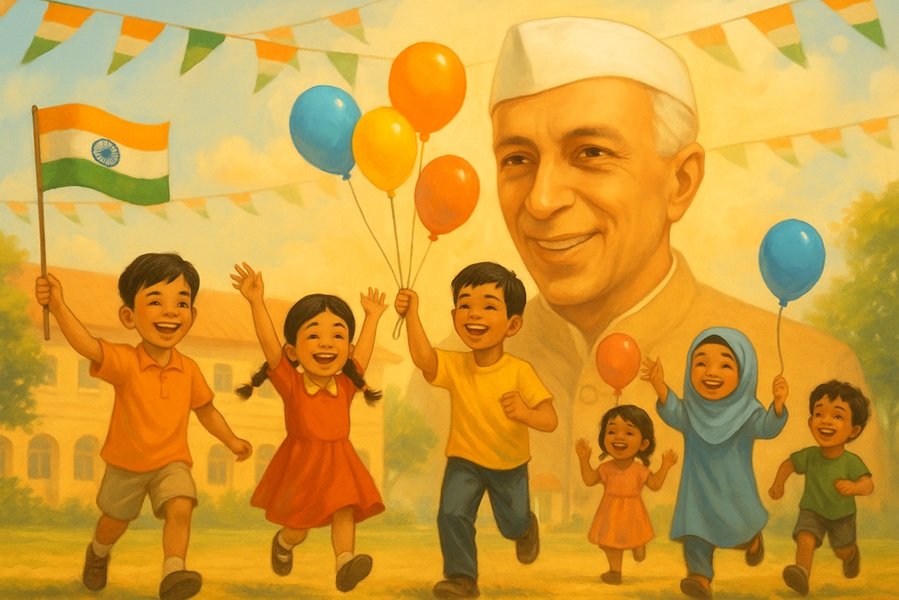
The colonial period in the history of Uttar Pradesh represents a dramatic transformation in its political, social, and economic landscape. Beginning in the late 18th century with the establishment of British authority and culminating in the formation of the United Provinces under British India, this era witnessed momentous events — none more significant than the Revolt of 1857, often regarded as India’s First War of Independence. This article explores the colonial evolution of Uttar Pradesh: from the decline of Mughal authority, through British consolidation, to the emergence of a province that would become pivotal in India’s independence movement.
The Rise of British Power in Uttar Pradesh
Decline of the Mughals and Rise of Regional Powers
- By the mid-18th century, the Mughal Empire had weakened significantly.
- The region of Awadh (Oudh), under semi-autonomous Nawabs, became a powerful regional entity. Saadat Ali Khan was appointed the first Nawab of Awadh in 1722.
- Awadh developed a rich culture in Lucknow, blending Persianate courtly traditions with local Hindu elements.
British Expansion
- The British East India Company gradually extended its control from Bengal into northern India.
- In 1801, the Nawab of Awadh ceded large territories (including modern-day Uttar Pradesh) to the Company under pressure.
- These areas were administered as the North-Western Provinces, with headquarters in Agra and later Allahabad.
The Revolt of 1857: The Epicenter of Resistance
Uttar Pradesh was the crucible of the Revolt of 1857, a watershed moment in India’s colonial history.
Causes of the Revolt
- Military grievances: Indian sepoys were discontent with low pay, limited promotions, and cultural insensitivity (e.g., greased cartridges).
- Political annexations: The Doctrine of Lapse and annexation of Awadh angered local rulers and nobility.
- Social discontent: Land revenue policies disrupted traditional agrarian structures; artisans suffered due to British imports.
Key Centers of the Revolt in Uttar Pradesh
- Meerut:
- The revolt began on May 10, 1857, when Indian soldiers revolted against their British officers.
- The rebels marched to Delhi, declaring Bahadur Shah Zafar as Emperor.
- Kanpur:
- Led by Nana Sahib, the adopted son of Peshwa Baji Rao II.
- Fierce battles took place here, with tragic consequences for both sides.
- Lucknow:
- Begum Hazrat Mahal, wife of the deposed Nawab, took charge and led resistance forces.
- British residency at Lucknow endured a long siege.
- Jhansi:
- Rani Lakshmibai, one of the most iconic figures of the revolt, led a valiant defense of her territory.
- Though technically part of Bundelkhand (overlapping with modern MP), it had strong cultural and strategic ties to UP.
- Allahabad, Faizabad, Bareilly, and Shahjahanpur:
- These cities witnessed armed uprisings and became temporary strongholds of resistance.
Aftermath of the Revolt
- The revolt was eventually suppressed by British reinforcements by mid-1858.
- The British Crown took direct control, ending the rule of the East India Company.
- Harsh reprisals followed, with entire towns punished and properties confiscated.
Formation of the United Provinces
Administrative Reorganization
- In 1877, the British renamed the North-Western Provinces as North-Western Provinces and Oudh, reflecting the annexed region of Awadh.
- In 1902, it was renamed United Provinces of Agra and Oudh, commonly shortened to United Provinces (UP).
Provincial Structure
- The province was administered by a Lieutenant Governor and later by a Governor.
- Major cities: Lucknow, Allahabad, Agra, Varanasi, and Kanpur became key administrative, military, and educational centers.
- The Allahabad High Court (established in 1866) became a premier legal institution.
Socio-Economic Impact of British Rule
Land and Agrarian Policies
- Introduction of Zamindari system led to peasant exploitation and rural indebtedness.
- Revenue settlements prioritized British income over farmers’ welfare.
Railways and Infrastructure
- Railways, roads, and telegraphs expanded significantly, connecting cities like Kanpur, Varanasi, and Lucknow.
- While boosting trade and troop movement, they also altered rural economies.
Education and Institutions
- Western-style education was introduced in cities such as Allahabad, Lucknow, and Varanasi.
- Banaras Hindu University (BHU), founded in 1916 by Pandit Madan Mohan Malaviya, became a beacon of higher learning.
- English replaced Persian and Sanskrit in official and elite circles.
Cultural Renaissance and National Awakening
Literature and Language
- Urdu and Hindi literature flourished with poets and writers like Premchand, Nirala, and Raghupati Sahay Firaq.
- The Hindi-Urdu controversy shaped linguistic politics and identity.
Religious and Social Reform Movements
- Arya Samaj, Aligarh Movement (founded by Sir Syed Ahmad Khan), and Brahmo Samaj were active in UP.
- These movements contributed to both Hindu and Muslim socio-political awakening.
Uttar Pradesh and the National Movement
Uttar Pradesh played a critical role in India’s freedom struggle.
Key Movements and Events
- Non-Cooperation Movement (1920): Strong participation from urban and rural areas.
- Civil Disobedience Movement (1930): Salt March replicas and boycotts were organized in UP.
- Quit India Movement (1942): UP saw mass protests, underground resistance, and arrests.
Eminent Freedom Fighters from UP
- Motilal Nehru and Jawaharlal Nehru (Allahabad)
- Chandra Shekhar Azad (born in Bhavra but operated in UP)
- Maulana Abul Kalam Azad, Govind Ballabh Pant, and others led Congress activities in the province.
Legislative Developments
- The Government of India Acts of 1919 and 1935 granted limited self-rule.
- United Provinces had its own legislature under British oversight.
Conclusion: The Colonial Legacy
The colonial era left a deep imprint on Uttar Pradesh. While British policies disrupted traditional society and led to economic challenges, the same period also saw the rise of modern education, communication, and legal frameworks. Most importantly, it sparked a powerful wave of national consciousness that placed Uttar Pradesh at the heart of India’s independence movement.
In the next installment of this series, we will examine the post-independence transformation of Uttar Pradesh: its political developments, socio-economic challenges, and emergence as a key player in democratic India.



